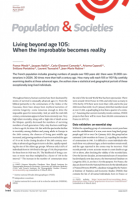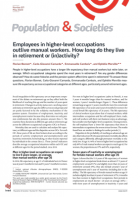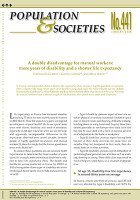Since 2005, Eurostat has used European Statistics on Income and Living Conditions (EU-SILC) to calculate annual estimates of life expectancy without activity limitations, known as "healthy life years"for each member state of the European Union. Following the release of Eurostat’s latest figures, this article presents the findings of several studies covering the period 2005-2010.
Each year since 2005, Eurostat has calculated life expectancy without activity limitations, known as"healthy life years". While life expectancy at age 65 increased by one year in the European Union between2005 and 2010, the years lived in poor perceived health decreased (by 0.5 years for men and 1.1 years for women)despite an increase in years with chronic morbidity (1.6 years for men, 1.3 years for women). Years withoutlimitation of activity remained unchanged. This paradoxcan be explained in part by more systematic detection and improved management of health problems, whoseprevalence may thus increase without necessarily producing an increase in reported activity limitations or innegative perceptions of health.














